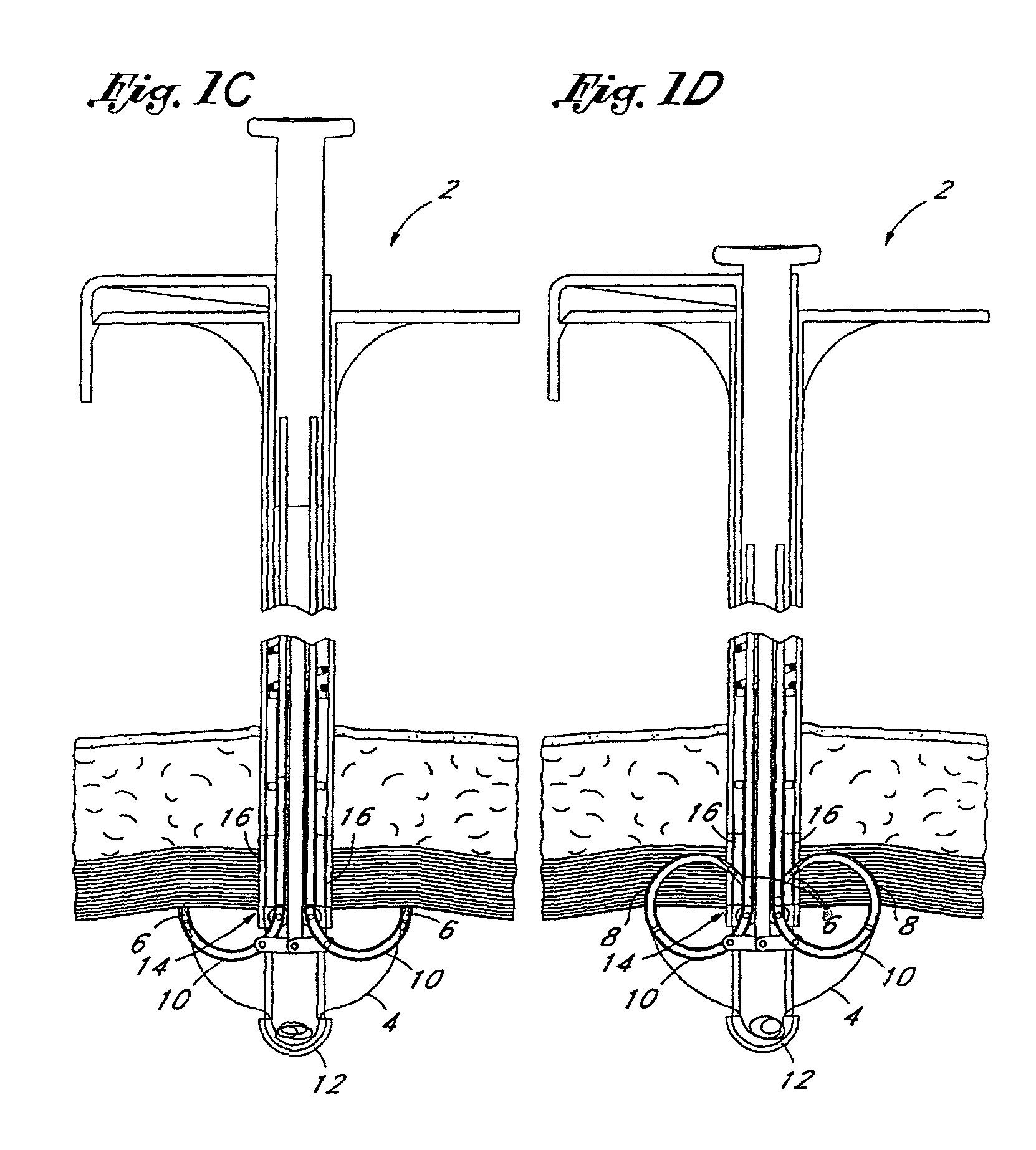Suturing instruments and methods of use
a technology of sutures and instruments, applied in the field of sutures for approximation, ligation and fixation of tissue using a suture, can solve the problems of severe limitation, limited mulhollan's instrument, time-consuming suturing of body tissues, etc., and achieves accurate placement, good suturing effect, and good suturing
- Summary
- Abstract
- Description
- Claims
- Application Information
AI Technical Summary
Benefits of technology
Problems solved by technology
Method used
Image
Examples
Embodiment Construction
[0083]Although the principles of the present invention are applicable to any device suitable for use in surgical procedures, whether performed on humans or animals, particular utility is effected in human abdominal surgery performed using endoscopic techniques for closure of the wounds created during the introduction of trocars into the abdominal cavity, and particularly the puncture wounds created thereof, as well as closure or approximation of the wounds created either during the resection of benign or malignant lesions, or during the performance of other therapeutic procedures on an organ or organs within a body cavity.
[0084]FIGS. 1A through 1H illustrate the general structure and operation of a first embodiment of the present invention. FIGS. 1A and 1B show a device 2, according to the present invention, which incorporates a length of standard suture material 4 with a needle 6 on each end. The needles 6 are held by a needle carrier 8 (FIG. 1D) and loaded into two guiding tracks ...
PUM
 Login to View More
Login to View More Abstract
Description
Claims
Application Information
 Login to View More
Login to View More - R&D
- Intellectual Property
- Life Sciences
- Materials
- Tech Scout
- Unparalleled Data Quality
- Higher Quality Content
- 60% Fewer Hallucinations
Browse by: Latest US Patents, China's latest patents, Technical Efficacy Thesaurus, Application Domain, Technology Topic, Popular Technical Reports.
© 2025 PatSnap. All rights reserved.Legal|Privacy policy|Modern Slavery Act Transparency Statement|Sitemap|About US| Contact US: help@patsnap.com



